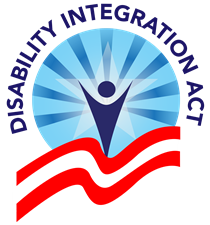Be sure to send out invitations to your event in advance and encourage people to request reasonable accommodations. This will allow those who are blind or have low vision to let you know if they’ll need any communication access accommodations.
When choosing a space:
- Make sure there is clear floor space and that things on the walls have adequate warnings markers on the floor.
- Make sure the acoustics are such that there are not a lot of echoes, or background noise. This can be mitigated by adding furniture along walls, or putting tapestries/fabric over walls and throw rugs (no pile, or very low pile) on the floor.
- Make sure there is good, clear, full spectrum, lighting. Use UV filters to block out UV radiation.
- Make sure there is appropriate braille signage on doorways, at appropriate heights.
When using written materials:
- Send ahead of time.
- Create an uncluttered Word Document with just the text of what needs to be conveyed, including a program of what to expect while there.
- Use single color font on single color background. Use high contrast colors either yellow and black, or white and black.
- Put logos, pictures, graphs, tables on separate pages at the back of the materials. Put descriptions of each on a page before the graphic material.
- Make an accessible electronic version of all materials. Make sure to use alt tags, and to add information into the tags.
- When doing a slideshow, or webinar, provide a telephone line with audio description of the slides and all other materials.
- Presenters should make sure to read each line of each slide and fully describe all images during the presentation.
- Identify all speakers/presenters.
Prepare several hard copies of text-only versions, large-print versions, and braille versions of the materials. Prepare several electronic versions, including text-only as well as screen-reader friendly versions.

Comments are closed.